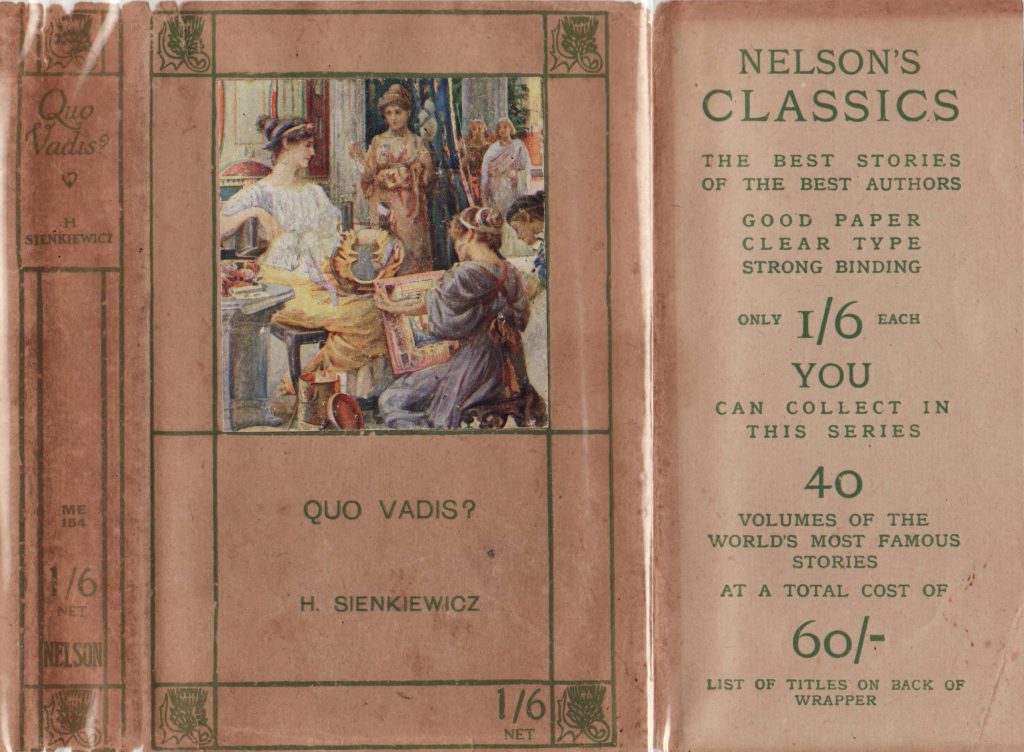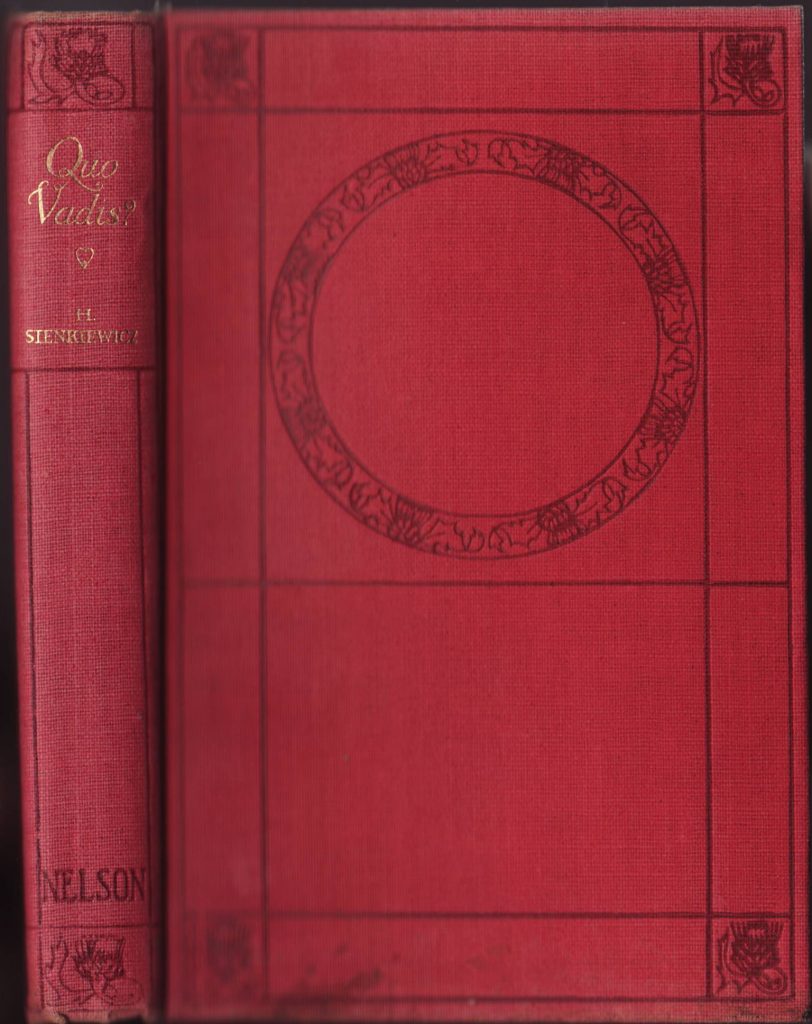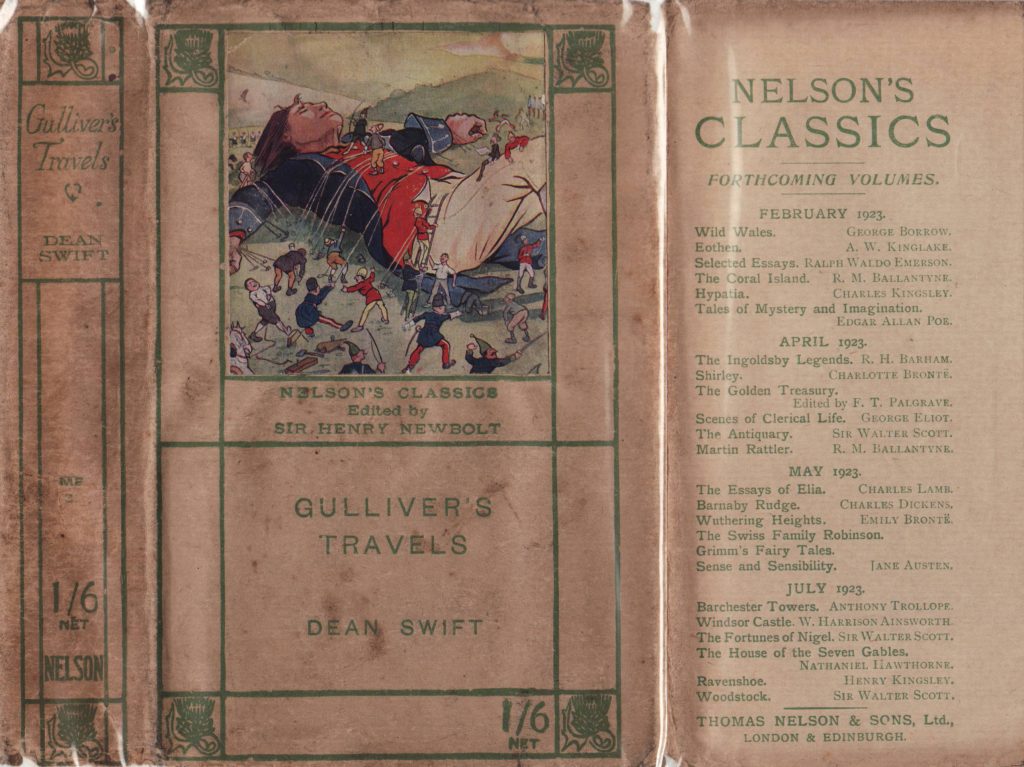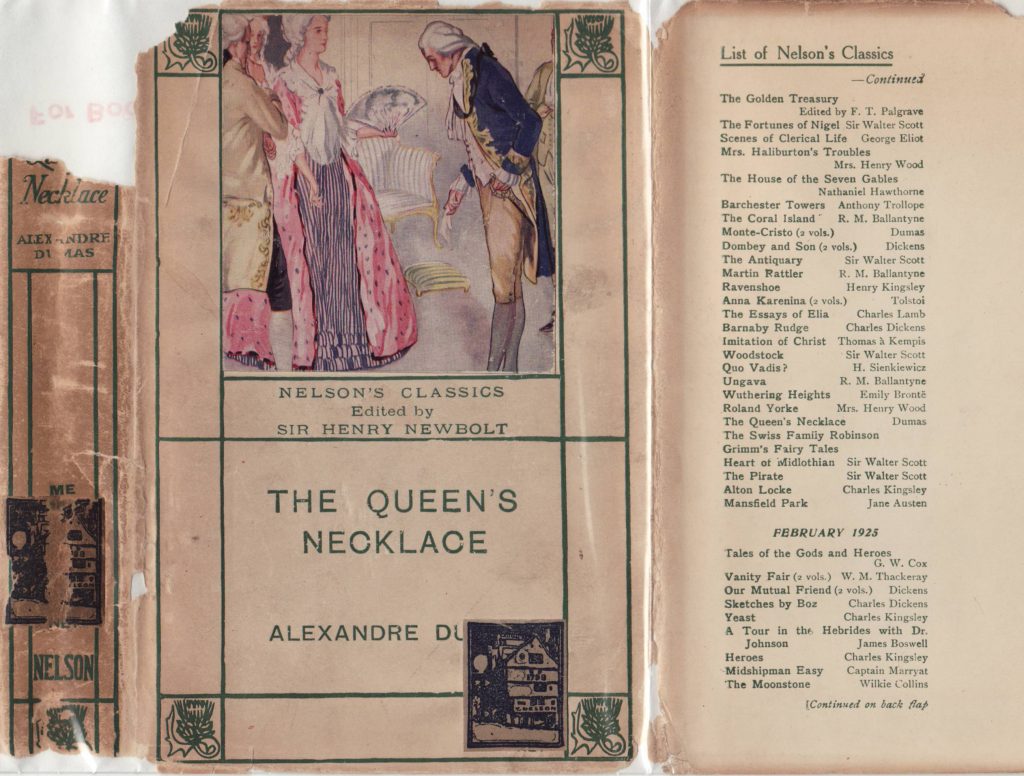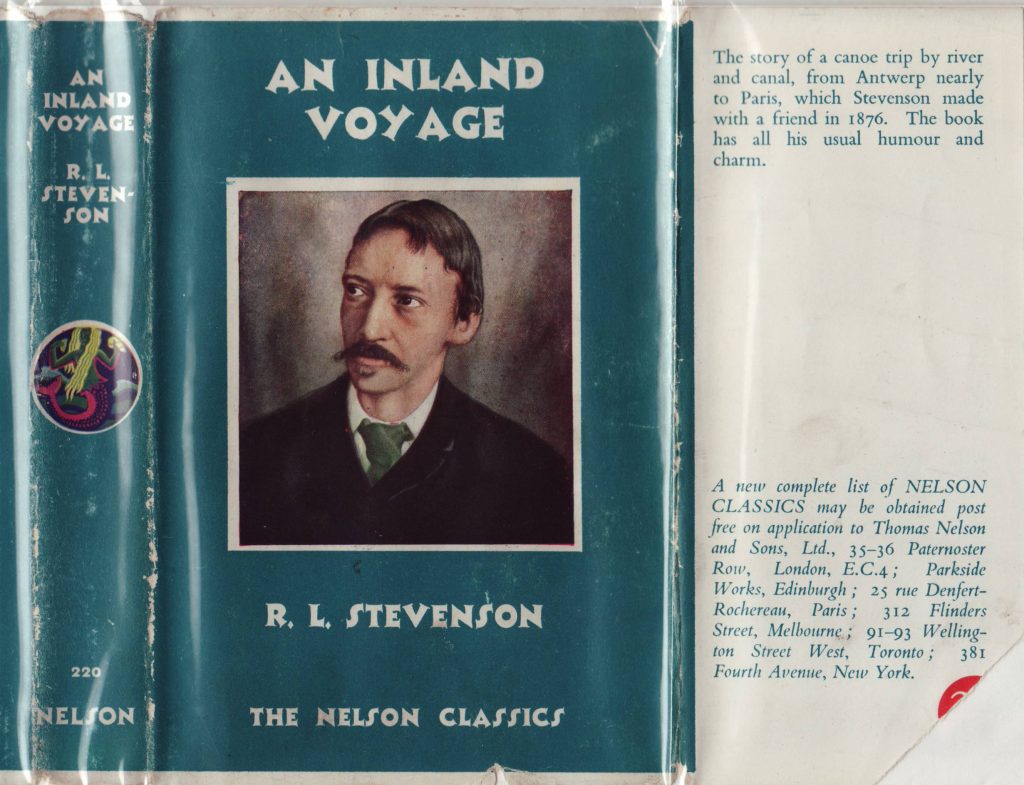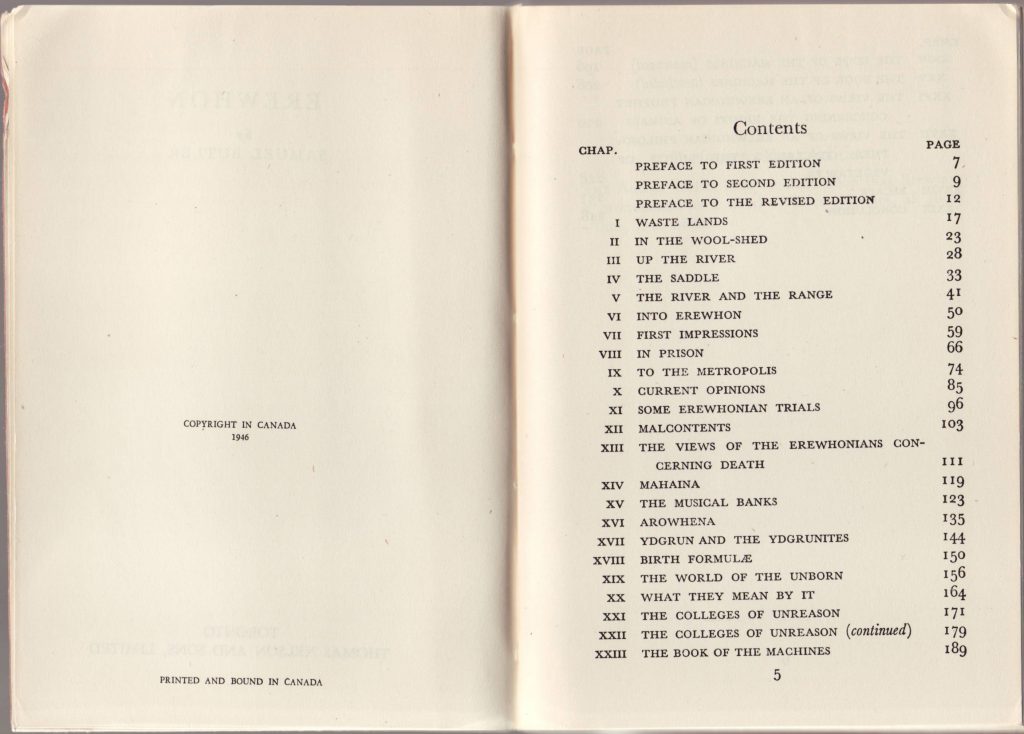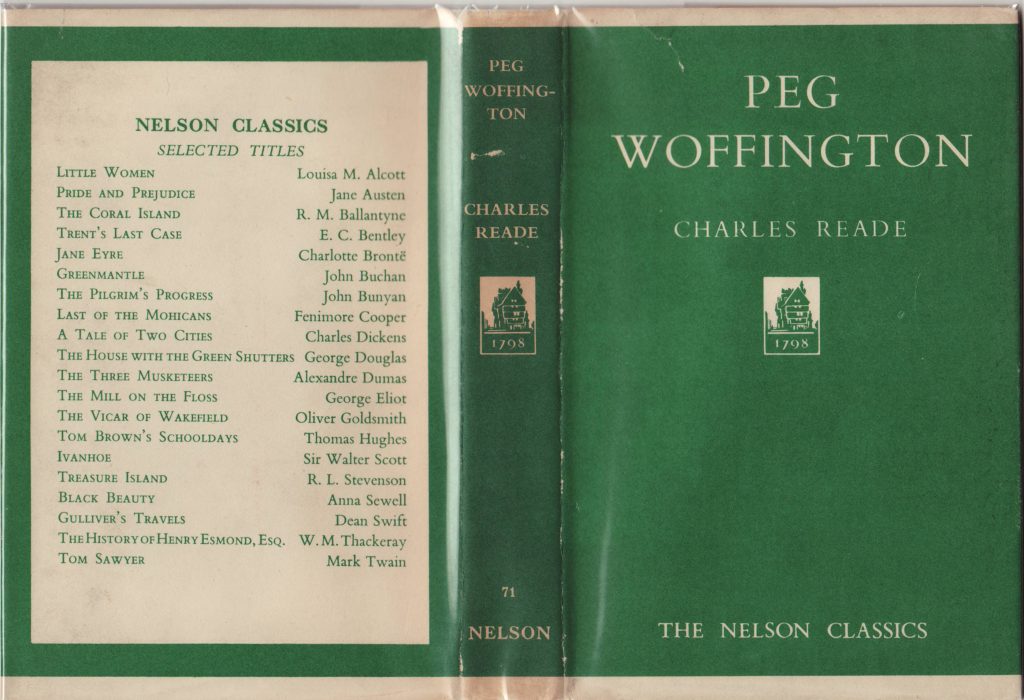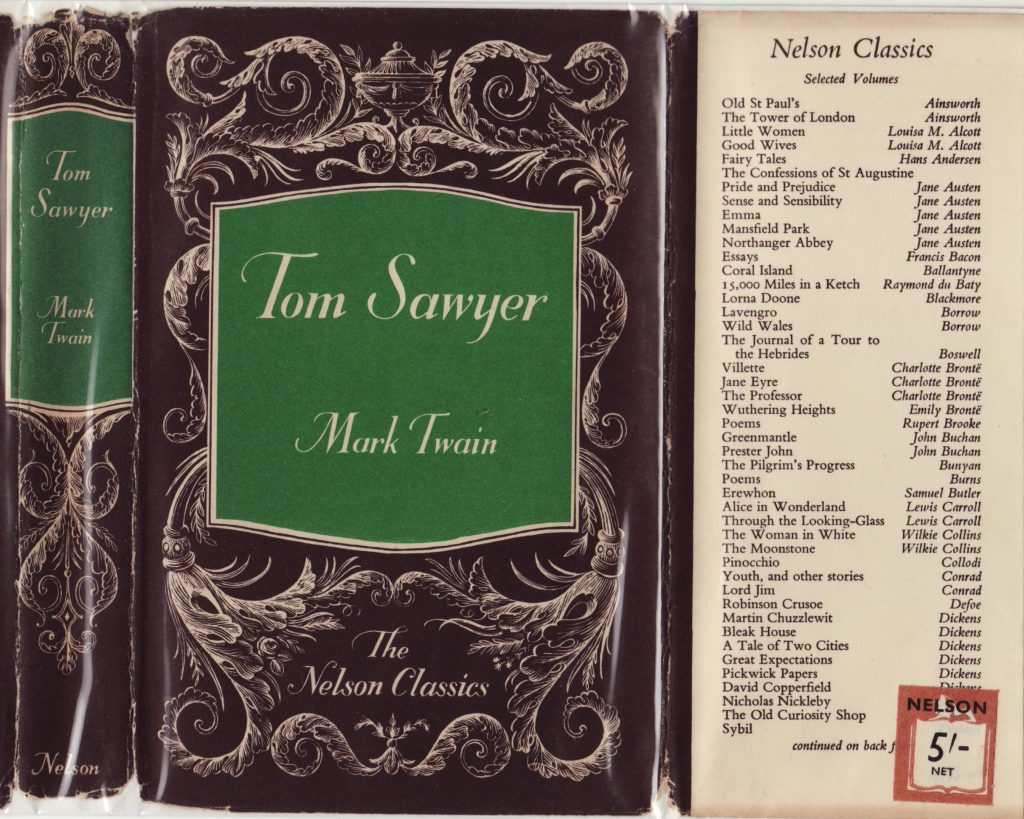aka/ Nelson Classics
aka/ Nelson Classics Double Volumes
aka/ Winchester Classics (deluxe binding of 1930s Nelson Classics)
T. Nelson & Sons Ltd. (London, UK)
Series dates: 1905-1965
Size: 4.25″ x 6.25″
 Nelson’s Classics (later, Nelson Classics) was a series much like the contemporary Collins’ Classics in size, design, and content. Harold Orel claims that Nelson’s New Century Library (became Nelson’s Classics in 1905) sold 50 million copies in half a century.” (The Victorian Short Story, 1986).
Nelson’s Classics (later, Nelson Classics) was a series much like the contemporary Collins’ Classics in size, design, and content. Harold Orel claims that Nelson’s New Century Library (became Nelson’s Classics in 1905) sold 50 million copies in half a century.” (The Victorian Short Story, 1986).
An excellent resource for the history of Nelson & Sons and the numerous series they published is Nelson’s Collections (in French). The blog for the Edinburgh Library Annexe, where the Nelson and Sons archives are stored, has several illustrated postings of books and other ephemera from the Nelson archives.
A Nelson book order form for their series and titles for 1912 folds into a mailable envelope. The Nelson Classics, Nelson Library (Novels), Shilling Library and their French and Spanish series titles are detailed.
 |
 |
A promotional booklet, 4″ x 6″, for the series is titled Pen Portraits of the Authors whose Masterpieces are Published in the Nelson Classics. This was most likely given away free. “Infinite Riches in a Little Room” and “The Best and Cheapest Books in the World” grace the cover. The booklet includes a list of titles forthcoming in the Spring of 1914 on the back cover, so this is probably from around the end of 1913. The covers (front and back):
A Forward extols the virtues of the series, discussing the concept of a literary masterpiece and how the Nelson Classics are nothing but masterpieces.
The virtues of Nelson’s new printing plant (30,000 books a day!) are noted at the end of the Forward. Author biographies with a sketch for most comprise the rest of the 64-page booklet.
After the biography, the author’s books in the series are listed.
Early Nelson’s Classics jackets, probably from the 1920s (but possibly earlier), have a color illustration glued to a common jacket with the title and author. The example below is probably from the early 1920s. The spine includes the series number as well as price (1/6). The front jacket flap advertises the series in terms of its paper/typography/binding but also in terms of the fact that the library of forty titles can be assembled at the cost of 60/-, which is equivalent to 3 pounds. Collect them all!
The back of the jacket lists the 40 titles at the time. This number would increase significantly in the next few years.
Cloth bindings have gold stamping and decorations. The series name is not indicated in or on the book.
A catalog of titles is printed in the back of some of the books (if there was room in the final signature).
A later jacket includes additions to the series for February 1923 and subsequent months advertised on the front jacket flap. In addition, the name of Sir Henry Newbolt is added to the jacket as series editor. Newbolt, known as a poet, novelist, and historian (some of his work was published in Nelson series books) was also involved in efforts to professionalize and standardize the teaching of English:
In 1921 he had been the author of a government Report entitled “The Teaching of English in England” which established the foundations for modern English Studies and professionalized the forms of teaching of English Literature. It established a canon, argued that English must become the linguistic and literary standard throughout the British Empire, and even proposed salary rates for lecturers. For many years it was a standard work for English teachers in teacher training Colleges. (source)
It made complete sense that Newbolt would be asked to edit a book series of primarily English classics aimed at both the general public as well as universities.
The back of the jacket recalculates the cost of acquiring the entire Nelson’s Classics series, now with its 72 titles at a bit over 5 pounds.
A third jacket variation has a February 1924 (and subsequent months) list of new titles in the series. One of the problems of advertising the book price on the jacket was the tendency to “price clip” the jacket (especially if the book was meant to be a gift). This left holes in the jacket, as in the example below.
The rear of the February 1925 jacket with the expanding list of series titles.
A February 1925 jacket shows British prices on the jacket covered by a sticker showing the Nelson logo. This book was probably sold in the United States, given the owner’s inscription in the book. Nelson had a New York office since 1854. Books continued to be manufactured in the UK.
The reverse of the February 1925 jacket.
The final jacket in this style eliminates the dated lists of new titles and organizes the titles by major authors. Given the titles listed on the jacket, this is after 1925.
The reverse of the post-1925 jacket.
A vastly simpler jacket with no illustrations appears sometime in the late 1920s. A British copy (below) maintains the price on the jacket and is printed in green. Titles continue to be listed on the jacket flaps and back.
Some titles, indicated with an asterisk, are available in “limp leather gilt top” at 3s/6d.
Similar plain jackets from this era are printed in reddish-brown without prices on the jacket.
The rear dust jacket flap indicates the New York office of Nelson as the publisher, although the book itself indicates that it is printed in the UK.
Bindings, to this point, have remained the same, as illustrated with the early 1920s binding at the top of this entry.
At some point in the late 1920s or early 1930s, the name of the series was simplified to Nelson Classics and the jackets were once again redesigned. Color variations in the jackets and bindings don’t seem to mean anything (unlike with Everyman’s Library where book color corresponds to the category of the book – literature, science, drama, etc.). The bookbinding changed for the first time since the 1920s.
The front jacket flap offers a catalog of the 300+ titles in the redesigned series; the back catalog lists some newer titles in the series and a description of the changes to the series. The price remains 1s/6d printed on the jacket.
The bindings are cloth, less glossy and less decorated than previous bindings.
An advertisement from the back of a Nelson Novels title attempts to sell the Nelson Classics as a “Desert Island Library.”
A catalog in the rear of this Stevenson title details the catalog, ca. 1930s. The price listed in this catalog shows an increase (to 2s/6d) over the price on the jacket (1s/6d). Some titles previously offered spread over two volumes are combined into one and sold as Nelson Classics Double Volumes for 3s. Also mentioned (marked with an asterisk in the list of titles) are volumes in the Winchester Classics, with a higher grade, faux-leather binding, and slipcase, for 3s./6d. and double volumes for 4s.
The series continued to grow through 1940, as evidenced by new titles indicated on the back of this WW2 era jacket. The price rose to 3s/- as indicated by the sticker on the jacket.
New titles, along with a promotion for London Calling Overseas.
An odd 1946 item is this paper-bound Canadian copy of Butler’s Erewhon. Binding tape holds a set of cardboard covers to the sewn signatures. One explanation for this book is that it’s a review/editorial copy, distributed for copyediting. However, Erewhon had been in the series since the 1930s. More likely the issue had to do with paper, printing and binding limitations during and immediately after WW2. Series like the Modern Library discontinued titles and let others go out of print until the mid to late 1940s.
The title page indicates this is a product of Nelson’s Toronto office.
The book manufacture was in Canada.
A post-WW2 hard-bound book and jacket (about 1946) indicate the price increase to 3/- on the rear jacket.
By 1956 the price, as indicated on the jacket back, has risen to 3p./6s.
What seems to be the latest style of this jacket, probably from the late 1950s, has no price indicated on the jacket.
Around 1960 the series jackets are redesigned again, the books themselves remaining unchanged. Jackets have a frilly, fussy design but are common to the series at this time, varying only in title author, name, and color. Color variation, again, seems random. By the early 1960s, the price has risen to 5p.
The back of the jacket contains a promotional blurb for the series.
A paperback Nelson Classics series was available from the 1950s onward. Competition from paperbacks and other hardcover series led to the demise of the Nelson Classics series sometime in the 1960s.




